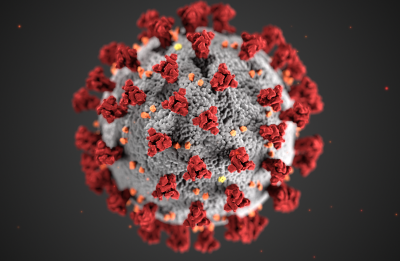 In the course of celebrating Mass we come to the distribution of Communion – during these times of the coronavirus pandemic. At my parish many precautions are taken as part of the distribution of Holy Communion: sanitizing hands of the minister, wearing masks, standing behind a plexiglass shield with a hand pass through – and the Bishop has asked that all the faithful please receive in the hand and not on the tongue. Still we try to be accommodating as best we can. If someone want to receive on the tongue, I will ask them to receive in the hands, but if they insist, I simply ask them to wait until the end of the line so that they are the last to receive. They can then receive on the tongue, following which I am able to again sanitize my hands.
In the course of celebrating Mass we come to the distribution of Communion – during these times of the coronavirus pandemic. At my parish many precautions are taken as part of the distribution of Holy Communion: sanitizing hands of the minister, wearing masks, standing behind a plexiglass shield with a hand pass through – and the Bishop has asked that all the faithful please receive in the hand and not on the tongue. Still we try to be accommodating as best we can. If someone want to receive on the tongue, I will ask them to receive in the hands, but if they insist, I simply ask them to wait until the end of the line so that they are the last to receive. They can then receive on the tongue, following which I am able to again sanitize my hands.
One of the problems is that how it looks to others of the faithful. If they do no watch with continuity (and it is a time for prayer), all they might see is someone being “refused” Eucharist. How often does this happen? Rarely. Folks whose normal practice is to receive on the tongue understand, for the time being, there is a larger common good in play and receive in the hand. But once in a while the request is made and people graciously wait.
During this pandemic, after Mass I have been approached by a “third party” berating me for refusing to offer Holy Communion – and even after explaining “wait until the end and I’d be happy” – comes the experience of what I call “any text without a context is a pretext for what someone wanted to say in the first place.” And it is then offered, “Studies show that saliva is not a transmission and so it [distribution on the tongue] safe.” Funny, it is always “studies.” But the actual studies are never quoted. Are they out there? There is tons of stuff “out there” on the internet. But my question is was it a valid study, a peer-reviewed study, and in these days is it someone who has credentials in field?
So is saliva a potential agent of spreading the coronoavirus? National Institute of Health (NIH) studies and the American Association of Dental Association (ADA) studies show that saliva is indeed a potential agent of coronavirus spread. It is in the logic of why the ADA recommends that dental hygienists not use pressurized water jets as part of the routine cleaning process – it causes aerosolization of the virus borne in saliva – this is n addition to all the other precautions and PPE. It is why the NIH studies offer: “SARS-CoV-2 has at least three separate routes to present in saliva. SARS-CoV-2 in the lower and upper respiratory tract reaches the oral cavity along with the liquid droplets; SARS-CoV-2 in the blood may enter the mouth through the gingival crevicular fluid; and major and minor infection of the salivary gland, with the ensuing release of particles into the saliva through salivary ducts.” [Sabino-Silva R., Jardim A.C., Siqueira W.L. Coronavirus COVID-19 impacts to dentistry and potential salivary diagnosis. Clin Oral Invest. 2020:1–3] The NIH studies also show that the salivary gland also seems targeted as a place where the virus flourishes. “For SARS-CoV, the salivary gland is a significant reservoir of the virus in saliva. The positive rate of COVID-19 in the saliva of patients can exceed about 92%, and the live virus can also be cultivated through saliva samples.”
For my own part, I think I take a pass on the “studies” that hold saliva is not a transmission agent and trust in those qualified to offer advice: NIH and ADA.